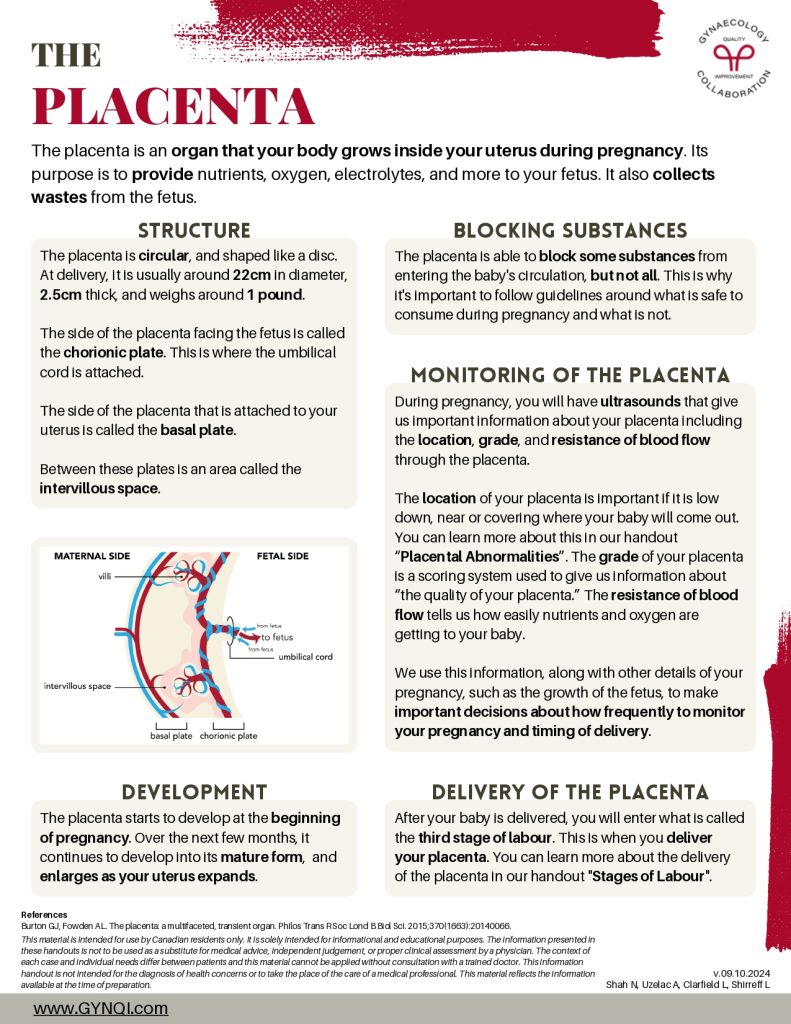
The Placenta
The placenta is an organ that your body grows inside your uterus during pregnancy. Its purpose is to provide nutrients, oxygen, electrolytes, and more to your fetus. It also collects wastes from the fetus.
Structure
The placenta is circular, and shaped like a disc. At delivery, it is usually around 22cm in diameter, 2.5cm thick, and weighs around 1 pound. The side of the placenta facing the fetus is called the chorionic plate. This is where the umbilical cord is attached. The side of the placenta that is attached to your uterus is called the basal plate. Between these plates is an area called the intervillous space.
Development
The placenta starts to develop at the beginning of pregnancy. Over the next few months, it continues to develop into its mature form, and enlarges as your uterus expands.
Blocking Substances
The placenta is able to block some substances from entering the baby’s circulation, but not all. This is why it’s important to follow guidelines around what is safe to consume during pregnancy and what is not.
Monitoring of the Placenta
During pregnancy, you will have ultrasounds that give us important information about your placenta including the location, grade, and resistance of blood flow through the placenta.
The location of your placenta is important if it is low down, near or covering where your baby will come out. You can learn more about this in our handout “Placental Abnormalities”. The grade of your placenta is a scoring system used to give us information about “the quality of your placenta.” The resistance of blood flow tells us how easily nutrients and oxygen are getting to your baby.
We use this information, along with other details of your pregnancy, such as the growth of the fetus, to make important decisions about how frequently to monitor your pregnancy and timing of delivery.
Delivery of the Placenta
After your baby is delivered, you will enter what is called the third stage of labour. This is when you deliver your placenta. You can learn more about the delivery of the placenta in our handout “Stages of Labour“.



